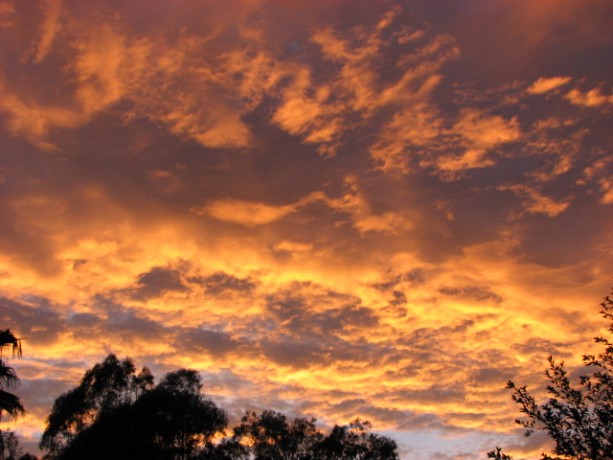The Sunken Bed Project, Part 3
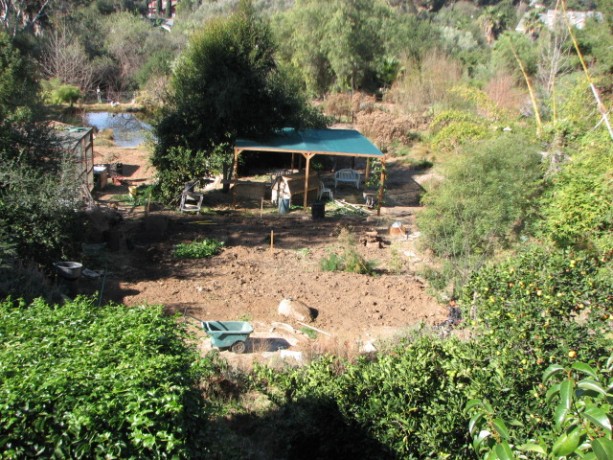
Today my daughter and I made good headway in the completion of the garden. In the morning the bed still had some veggies that needed transplanting, the ground needed smoothing, the giant clumps of asparagus plants we’d hauled out needed to be planted right away because they were already trying to come out of dormancy, and we certainly didn’t want to lose this spring’s crop.
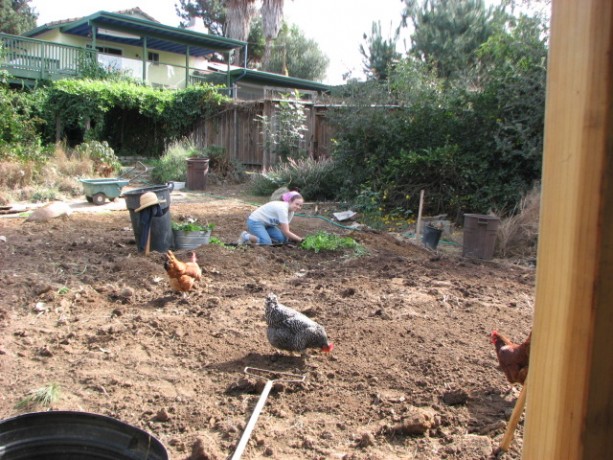
We let the girls loose since we were watching out for coyotes. They loved the grubs and unfortunately, the valuable worms too. Lark, the barred rock in the foreground, was up to her old tricks of jumping onto my shovel and quickly kicking half the dirt off in search of bugs. Miranda painstakingly dug up lots of salad greens for transplanting. We both dug up and pulled out lots of Bermuda grass as we went. The trash cans are full of it.
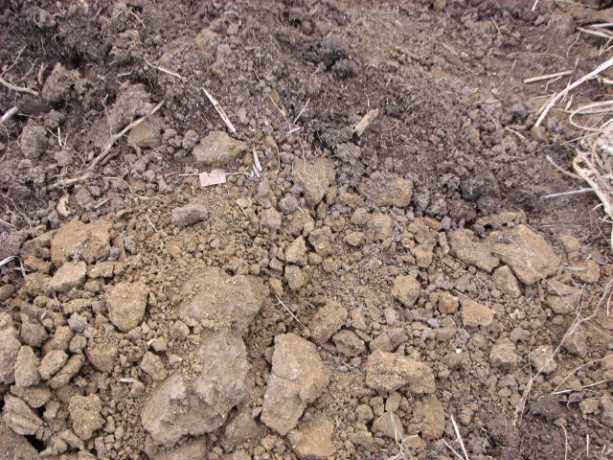
While digging those 2 foot deep trenches we unearthed a lot of clay. On the surface the colors of what had been good garden soil next to what lay under it was very clear. With the deep hugelkultur beds and the sheetmulching, all this clay will be turned into microbial rich soil.
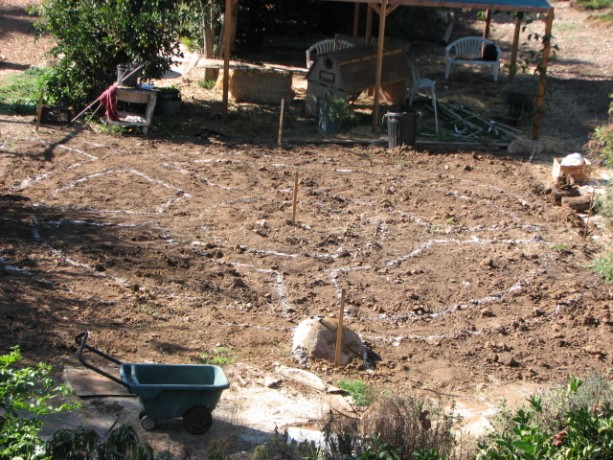
Finally we were able to measure off and draw out the design of the garden. We used gypsum which is good for the soil. So many people use spray paint to mark the ground… just don’t! Toxic fumes and toxic chemicals in the soil. If you don’t have gypsum, use flour! The light is bright in the above photo so you can’t see the design so well. We had carefully drawn out several designs on graph paper. An intricate Celtic design was the most favorable one until I’d realized the garden wasn’t square but rectangular. It was just as well because it would have been a nightmare of measuring. This one has 2′ wide pathways from prime entry angles (a wheelbarrow can fit), each planter bed is easily reached from all sides, and the circular design is pleasing and fun.
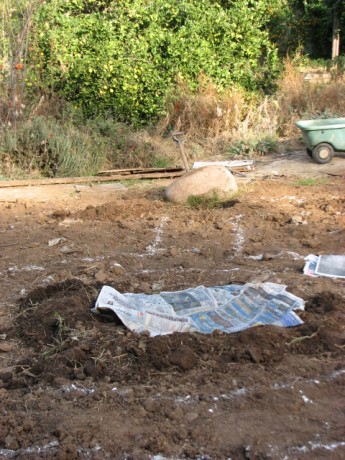
There was a big flaw in the plan. There was this boulder that had been placed during the original construction of the garden. It didn’t serve a purpose, it was always in the way, it was a shelter for Bermuda grass, and it wasn’t attractive. Now it was at the head of one of the pathways. It had to go. My daughter and I decided to move it to the center of the garden. After transplanting the heavy batches of asparagus, we dug out a hole for the rock to sit in; when placing boulders it is visually more attractive if the boulder is buried at least a quarter of its size into the ground to look natural. We placed wet newspapers around the hole so that the boulder would sit on them and they would block Bermuda grass from emerging.
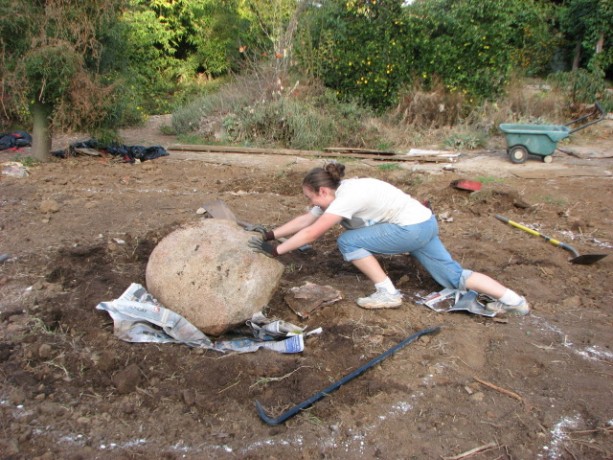
Although the garden was sloped down from the boulder, the rock wasn’t round and didn’t want to roll. We dug out a pathway for it, and using a long crowbar and a digging bar we managed to turn it over. We pushed and heaved and balanced and flipped it until it was right at the rim of the hole, and then things became difficult because it wasn’t positioned in the way we wanted it. The rock has a flat side, and is long. Miranda suggested that the tall side should stand up for birds to perch on, and I liked the Half-Dome look to it. We heaved the rock into the hole, then walked it around, tipped it up, centered it, and eased it into place, using the bars and all of our strength. Luckily the boulder didn’t roll on a foot, or the bar slip and break my collarbone. Finally we tiredly decided that the position it was in was good enough and we were both happy. Exhaustion had much to do with this decision. Miranda propped it up with clay chunks as I held it in place with the digging bar, then backfilled around it. It looks fantastic; a good central point for the garden, and a source of thermal retention.
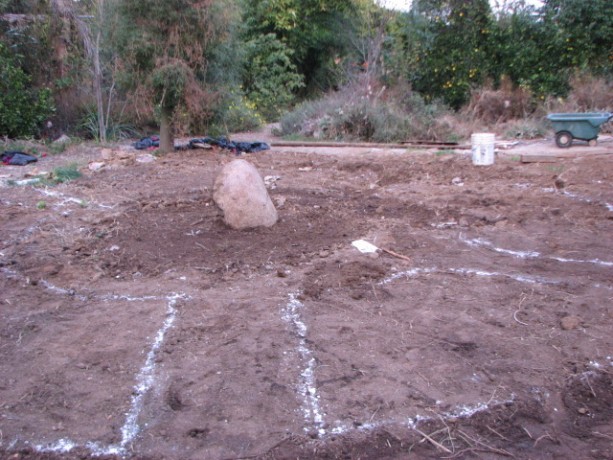
We messed up some of our pathway lines, but we can easily redraw them. The sun was setting and the mosquitoes humming; the Pacific chorus frogs began calling by the hundreds, and the wigeon came in to feed on the pond. There were still chores and dinner to be had, but exhausted as we were, we were pretty darn proud of ourselves for moving that big guy by ourselves. Next comes the sheet mulch.
